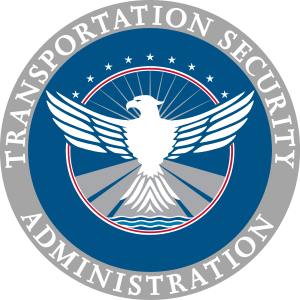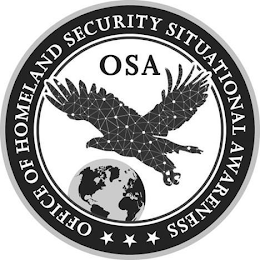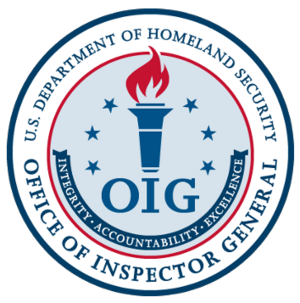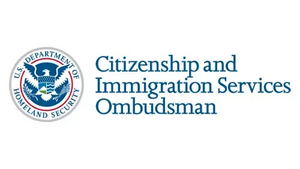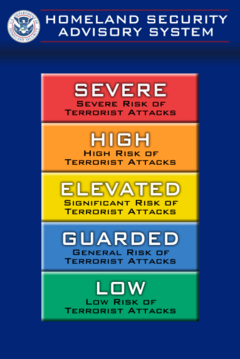United States Department of Homeland Security facts for kids

|
|

Flag of the U.S. Department of Homeland Security
|
|
 Headquarters of the U.S. Department of Homeland Security in Washington D.C. |
|
| Agency overview | |
|---|---|
| Formed | November 25, 2002 |
| Jurisdiction | U.S. federal government |
| Headquarters | St. Elizabeths West Campus, Washington, D.C., U.S. 38°51′17″N 77°00′00″W / 38.8547°N 77.0000°W |
| Employees | 240,000 (2018) |
| Annual budget | $51.672 billion (FY 2020) |
| Agency executives |
|
| Child agency |
|
| Key document |
|
| Agency ID | 7000 |
The United States Department of Homeland Security (DHS) is the U.S. federal executive department responsible for public security, roughly comparable to the interior or home ministries of other countries. Its stated missions involve anti-terrorism, border security, immigration and customs, cyber security, and disaster prevention and management.
It began operations on March 1, 2003, after being formed as a result of the Homeland Security Act of 2002, enacted in response to the September 11 attacks. With more than 240,000 employees, DHS is the third-largest Cabinet department, after the departments of Defense and Veterans Affairs. Homeland security policy is coordinated at the White House by the Homeland Security Council. Other agencies with significant homeland security responsibilities include the departments of Health and Human Services, Justice, and Energy.
Contents
- History
- Function
- Organizational structure
- U.S. Citizenship and Immigration Services
- U.S. Coast Guard
- U.S. Customs and Border Protection
- U.S. Cybersecurity and Infrastructure Security Agency
- U.S. Federal Emergency Management Agency
- U.S. Federal Law Enforcement Training Centers
- U.S. Immigration and Customs Enforcement
- U.S. Secret Service
- U.S. Transportation Security Administration
- DHS Management Directorate
- DHS Science and Technology Directorate
- DHS Countering Weapons of Mass Destruction Office
- DHS Office of Homeland Security Situational Awareness
- DHS Office of Health Security
- DHS Office of Inspector General
- DHS Office of the Secretary
- DHS Advisory Panels
- National Terrorism Advisory System
- Seal
- Headquarters
- Cyber-security
- Secretaries
- See also
History
Creation
In response to the September 11 attacks, President George W. Bush announced the establishment of the Office of Homeland Security (OHS) to coordinate "homeland security" efforts. The office was headed by former Pennsylvania Governor Tom Ridge, who assumed the title of Assistant to the President for Homeland Security. The official announcement states:
The mission of the Office will be to develop and coordinate the implementation of a comprehensive national strategy to secure the United States from terrorist threats or attacks. The Office will coordinate the executive branch's efforts to detect, prepare for, prevent, protect against, respond to, and recover from terrorist attacks within the United States.
Ridge began his duties as OHS director on October 8, 2001. On November 25, 2002, the Homeland Security Act established the Department of Homeland Security to consolidate U.S. executive branch organizations related to "homeland security" into a single Cabinet agency. The Gilmore Commission, supported by much of Congress and John Bolton, helped further solidify need for the department. The DHS incorporated the following 22 agencies.
List of incorporated agencies
| Original agency | Original department | New agency or office after transfer |
|---|---|---|
| U.S. Customs Service | Treasury | U.S. Customs and Border Protection U.S. Immigration and Customs Enforcement |
| Immigration and Naturalization Service | Justice | U.S. Customs and Border Protection U.S. Immigration and Customs Enforcement U.S. Citizenship and Immigration Services |
| Federal Protective Service | General Services Administration | Management Directorate |
| Transportation Security Administration | Transportation | Transportation Security Administration |
| Federal Law Enforcement Training Center | Treasury | Federal Law Enforcement Training Center |
| Animal and Plant Health Inspection Service (part) |
Agriculture | U.S. Customs and Border Protection |
| Federal Emergency Management Agency | none | Federal Emergency Management Agency (FEMA) |
| Strategic National Stockpile | Health and Human Services | Originally assigned to FEMA, Returned to HHS, July 2004 |
| National Disaster Medical System | Health and Human Services | Originally assigned to FEMA, Returned to HHS, August 2006 |
| Nuclear Incident Response Team | Energy | Responsibilities distributed within FEMA |
| Domestic Emergency Support Team | Justice | Responsibilities distributed within FEMA |
| Center for Domestic Preparedness | Justice (FBI) | Responsibilities distributed within FEMA |
| CBRN Countermeasures Programs | Energy | Science & Technology Directorate |
| Environmental Measurements Laboratory | Energy | Science & Technology Directorate |
| National Biological Warfare Defense Analysis Center |
Defense | Science & Technology Directorate |
| Plum Island Animal Disease Center | Agriculture | Science & Technology Directorate |
| Federal Computer Incident Response Center | General Services Administration | US-CERT, Office of Cybersecurity and Communications National Programs and Preparedness Directorate (now CISA) |
| National Communications System | Defense | Office of Cybersecurity and Communications National Programs and Predaredness Directorate |
| National Infrastructure Protection Center | Justice (FBI) | Office of Operations Coordination Office of Infrastructure Protection |
| Energy Security and Assurance Program | Energy | Office of Infrastructure Protection |
| U.S. Coast Guard | Transportation | U.S. Coast Guard |
| U.S. Secret Service | Treasury | U.S. Secret Service |
Function

Whereas the Department of Defense is charged with military actions abroad, the Department of Homeland Security works in the civilian sphere to protect the United States within, at, and outside its borders. Its stated goal is to prepare for, prevent, and respond to domestic emergencies, particularly terrorism. On March 1, 2003, DHS absorbed the U.S. Customs Service and Immigration and Naturalization Service (INS) and assumed its duties. In doing so, it divided the enforcement and services functions into two separate and new agencies: Immigration and Customs Enforcement and Citizenship and Immigration Services. The investigative divisions and intelligence gathering units of the INS and Customs Service were merged forming Homeland Security Investigations, the primary investigative arm of DHS. Additionally, the border enforcement functions of the INS, including the U.S. Border Patrol, the U.S. Customs Service, and the Animal and Plant Health Inspection Service were consolidated into a new agency under DHS: U.S. Customs and Border Protection. The Federal Protective Service falls under the National Protection and Programs Directorate.
Organizational structure
The Department of Homeland Security is headed by the secretary of homeland security with the assistance of the deputy secretary. DHS contains operational components, executing specific missions under the purview of the DHS; support components, supporting the mission of the DHS and operational components; and components in the Office of the Secretary, supporting department leadership, DHS components, and the secretary by overseeing and establishing policy.
U.S. Citizenship and Immigration Services
United States Citizenship and Immigration Services (USCIS) oversees lawful immigration into the United States. Note that Passports for U.S. citizens are issued by the U.S. Department of State, not the Department of Homeland Security.
Executives
- Director, Kika Scott (acting)
- Deputy Director, Andrew J. Davidson (acting)
Subordinate components
- Office of Performance and Quality
- Office of Investigations
- Office of Privacy
- Office of Administrative Appeals
- Immigration Records and Identity Services Directorate
- Field Operations Directorate
- External Affairs Directorate
- Fraud Detection and National Security Directorate
- Management Directorate
- Service Center Operations Directorate
- Asylum and International Operations Directorate
U.S. Coast Guard
The United States Coast Guard (USCG) is the maritime security, search and rescue, and law enforcement service branch of the U.S. Armed Forces. It is under the Department of Homeland Security during times of peace, and under the U.S. Department of the Navy during wartime.
Executives
- Commandant, Admiral Kevin E. Lunday (Acting)
- Vice Commandant, Admiral Kevin E. Lunday
Subordinate components
- Atlantic Area
- Coast Guard District 1
- Coast Guard District 5
- Coast Guard District 7
- Coast Guard District 8
- Coast Guard District 9
- Pacific Area
- Coast Guard District 11
- Coast Guard District 13
- Coast Guard District 14
- Coast Guard District 17
U.S. Customs and Border Protection
United States Customs and Border Protection (CBP) is a law enforcement agency responsible for protecting the U.S. border against illegal entry, illicit activity, and other threats; combatting transnational crime and terrorism that's a threat to the economic and national security of the United States; and facilitating lawful trade and lawful entry into the United States.
Executives
- Commissioner, Pete R. Flores (acting)
- Deputy Commissioner, John Modlin (acting)
Subordinate components
- U.S. Border Patrol
- Office of Field Operations
- Air and Marine Operations
- Office of Trade
- Enterprise Services Office
- Operations Support Office
U.S. Cybersecurity and Infrastructure Security Agency
The United States Cybersecurity and Infrastructure Security Agency (CISA) is the leading entity of the U.S. federal government in understanding, managing, and reducing risk to cyber and physical infrastructure across the United States.
Executives
- Director, Jen Easterly
- Deputy Director, Nitin Natarajan
Subordinate components
- Cybersecurity Division
- Infrastructure Security Division
- Emergency Communications Division
- Integrated Operations Division
- Stakeholder Engagement Division
- National Risk Management Center
U.S. Federal Emergency Management Agency
The United States Federal Emergency Management Agency (FEMA) invests in, improves, and supports capabilities to respond to, mitigate, protect against, recover from, and to prepare for all hazards that may threaten the security of the United States and its citizens, such as natural disasters.
Executives
- Administrator, Cameron Hamilton (acting)
- Deputy Administrator, Erik Hooks
Subordinate components
- Mission Support
- Regional Offices (Regions 1-10)
- Resilience
- Response and Recovery
- U.S. Fire Administration
U.S. Federal Law Enforcement Training Centers
The United States Federal Law Enforcement Training Centers (FLETC) provides training services to U.S. law enforcement.
Executives
- Director, Benjamine C. Huffman
- Deputy Director, Paul E. Baker
- Associate Director for Training Operations, Ariana M. Roddini
Subordinate components
- Training Management Operations Directorate
- National Capital Region Training Operations Directorate
- Core Training Operations Directorate
- Technical Training Operations Directorate
- Mission and Readiness Support Directorate
U.S. Immigration and Customs Enforcement
United States Immigration and Customs Enforcement (ICE) enforces federal laws governing border control, customs, trade, and immigration.
Executives
- Director, Todd Lyons (acting)
- Deputy Director, Kenneth Ganallo (acting)
Subordinate components
- Enforcement and Removal Operations
- Homeland Security Investigations
U.S. Secret Service
The United States Secret Service (USSS) is charged with the protection of the President of the United States and other government officials and persons designated by law. It also safeguards U.S. financial infrastructure and fights against counterfeiting.
Executives
- Director, Sean M. Curran
- Deputy Director, Darryl S. Volpicelli (acting)
Subordinate components
- Uniformed Division
- Office of Protective Operations
- Office of Investigations
U.S. Transportation Security Administration
The United States Transportation Security Administration (TSA) protects U.S. transportation systems (e.g. airport security) and ensures freedom of movement for people and commerce. It was created as a result of the September 11 attacks in the United States by the Aviation and Transportation Security Act of 2001.
Executives
- Administrator, Adam Stahl (acting)
- Deputy Administrator, Melanie Harvey (acting)
Subordinate components
- Federal Air Marshal Service
- Security Operations
- TSA Investigations
- Operations Support
- Enterprise Support
DHS Management Directorate
The Department of Homeland Security Management Directorate (MGMT) manages department finance, appropriations, accounting, budgeting, expenditures, procurement, human resources and personnel, information technology systems, biometric identification services, facilities, property, equipment, other material resources, protection of department personnel, information and resources, performance metrics, and the security of federal infrastructure.
Executives
- Under Secretary, Randolph D. "Tex" Alles (acting)
- Deputy Under Secretary, Randolph D. "Tex" Alles
- Associate Deputy Under Secretary, Jeff Rezmovic
Subordinate components
- Office of the Chief Financial Officer
- Office of the Chief Human Capital Officer
- Office of the Chief Information Officer
- Office of the Chief Procurement Officer
- Office of the Chief Readiness Support Officer
- Office of the Chief Security Officer
- Office of Program Accountability and Risk Management
- Office of Biometric Identity Management
- U.S. Federal Protective Service
DHS Science and Technology Directorate
The Department of Homeland Security Science and Technology Directorate (S&T) is the department's research and development arm.
Executives
- Under Secretary, Dr. Dimitri Kusnezov
- Deputy Under Secretary, Julie S. Brewer
Subordinate components
- Office of Innovation and Collaboration
- Office of Mission and Capability Support
- Office of Enterprise Services
- Office of Science and Engineering
DHS Countering Weapons of Mass Destruction Office
The Department of Homeland Security Countering Weapons of Mass Destruction Office (CWMD) works to prevent chemical, biological, nuclear, and radiological attacks against the United States.
Executives
- Assistant Secretary, Mary Ellen Callahan
- Principle Deputy Assistant Secretary, Charles Cook
Subordinate components
- BioWatch Program
- Securing the Cities Program
- Mobile Detection Deployment Program
- Training and Exercise Program
- CBRN Intelligence
- National Biosurveillance Integration Center
DHS Office of Homeland Security Situational Awareness
The Office of Homeland Security Situational Awareness (OSA) provides operations coordination, information sharing, situational awareness, common operating picture, and executes the Secretary's responsibilities across the homeland security enterprise.
Executives
- Director, Rear Admiral Christopher J. Tomney
- Deputy Director, Frank DiFalco
Subordinate components
- National Operations Center
- Integration Division
- Mission Support Division
DHS Office of Health Security
The Department of Homeland Security Office of Health Security (OHS) is the principal medical, workforce health and safety, and public health authority for DHS.
Executives
- Director & Chief Medical Officer, Dr. Herbert Wolfe (acting)
- Deputy Director & Deputy Chief Medical Officer, Dr. Herbert Wolfe
Subordinate components
- Total Workforce Protection Directorate
- Health, Food & Agriculture Resilience Directorate
- Healthcare Systems & Oversight Directorate
- Health Information Systems & Decision Support
- Regional Operations
DHS Office of Inspector General
The Department of Homeland Security Office of Inspector General (OIG) provides independent oversight and promotes excellence, integrity, and accountability within DHS.
Executives
- Inspector General, Joseph V. Cuffari
- Principle Deputy Inspector General, Glenn Sklar
Subordinate components
- Office of Audits
- Office of Investigations
- Office of Integrity
- Office of Management
- Office of Innovation
- Office of Inspections and Evaluations
DHS Office of the Secretary
The Office of the Secretary of Homeland Security oversees the Department of Homeland Security's execution of its mission to safeguard the nation.
Executives
- Chief of Staff, vacant/none.
Subordinate components
- Office for Civil Rights and Civil Liberties
- Climate Change Action Group
- Office of the Executive Secretary
- Family Reunification Task Force
- Office of the General Counsel
- Joint Requirements Council
- Office of Legislative Affairs
- Office of the Military Advisor
- Office of the Immigration Detention Ombudsman
- Office of the Citizenship and Immigration Ombudsman
- Office of Partnership and Engagement
- DHS Privacy Office
- Office of Public Affairs
- Office of Strategy, Policy, and Plans
- Office for State and Local Law Enforcement
- Center for Countering Human Trafficking
- Committee Management Office
- Council on Combating Gender-Based Violence
- Forced Labor Enforcement Task Force
DHS Advisory Panels
DHS advisory panels and committees provide advice and recommendations on mission-related topics from academic engagement to privacy.
- Homeland Security Academic Partnership Council (HSAPC)
- Artificial Intelligence Safety and Security Board (AISSB)
- Counternarcotics Coordinating Council (CNCC)
- Faith-Based Security Advisory Council (FBSAC)
- Homeland Security Advisory Council (HSAC)
- Data Privacy and Integrity Advisory Committee (DPIAC)
- Tribal Homeland Security Advisory Council (THSAC)
National Terrorism Advisory System
In 2011, the Department of Homeland Security phased out the old Homeland Security Advisory System, replacing it with a two-level National Terrorism Advisory System. The system has two types of advisories: alerts and bulletins. NTAS bulletins permit the secretary to communicate critical terrorism information that, while not necessarily indicative of a specific threat against the United States, can reach homeland security partners or the public quickly, thereby allowing recipients to implement necessary protective measures. Alerts are issued when there is specific and credible information of a terrorist threat against the United States. Alerts have two levels: elevated and imminent. An elevated alert is issued when there is credible information about an attack but only general information about timing or a target. An Imminent Alert is issued when the threat is very specific and impending in the very near term.
On March 12, 2002, the Homeland Security Advisory System, a color-coded terrorism risk advisory scale, was created as the result of a Presidential Directive to provide a "comprehensive and effective means to disseminate information regarding the risk of terrorist acts to Federal, State, and local authorities and to the American people". Many procedures at government facilities are tied into the alert level; for example a facility may search all entering vehicles when the alert is above a certain level. Since January 2003, it has been administered in coordination with DHS; it has also been the target of frequent jokes and ridicule on the part of the administration's detractors about its ineffectiveness. After resigning, Tom Ridge said he did not always agree with the threat level adjustments pushed by other government agencies.
In January 2003, the office was merged into the Department of Homeland Security and the White House Homeland Security Council, both of which were created by the Homeland Security Act of 2002. The Homeland Security Council, similar in nature to the National Security Council, retains a policy coordination and advisory role and is led by the assistant to the president for homeland security.
Seal
The seal was developed with input from senior DHS leadership, employees, and the U.S. Commission on Fine Arts. The Ad Council – which partners with DHS on its Ready.gov campaign – and the consulting company Landor Associates were responsible for graphic design and maintaining heraldic integrity.
The seal is symbolic of the Department's mission – to prevent attacks and protect Americans – on the land, in the sea and in the air. In the center of the seal, a graphically styled white American eagle appears in a circular blue field. The eagle's outstretched wings break through an inner red ring into an outer white ring that contains the words "U.S. DEPARTMENT OF" in the top half and "HOMELAND SECURITY" in the bottom half in a circular placement. The eagle's wings break through the inner circle into the outer ring to suggest that the Department of Homeland Security will break through traditional bureaucracy and perform government functions differently. In the tradition of the Great Seal of the United States, the eagle's talon on the left holds an olive branch with 13 leaves and 13 seeds while the eagle's talon on the right grasps 13 arrows.
Centered on the eagle's breast is a shield divided into three sections containing elements that represent the American homeland – air, land, and sea. The top element, a dark blue sky, contains 22 stars representing the original 22 entities that have come together to form the department. The left shield element contains white mountains behind a green plain underneath a light blue sky. The right shield element contains four wave shapes representing the oceans alternating light and dark blue separated by white lines.
- DHS June 6, 2003
Headquarters
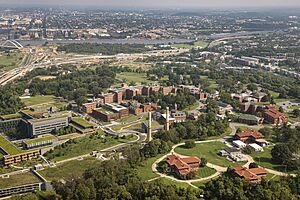

Since its inception, the department's temporary headquarters had been in Washington, D.C.'s Nebraska Avenue Complex, a former naval facility. The 38-acre (15 ha) site, across from American University, has 32 buildings comprising 566,000 square feet (52,600 m2) of administrative space. In early 2007, the department submitted a $4.1 billion plan to Congress to consolidate its 60-plus Washington-area offices into a single headquarters complex at the St. Elizabeths Hospital campus in Anacostia, Southeast Washington, D.C.
The move was championed by District of Columbia officials because of the positive economic impact it would have on historically depressed Anacostia. The move was criticized by historic preservationists, who claimed the revitalization plans would destroy dozens of historic buildings on the campus. Community activists criticized the plans because the facility would remain walled off and have little interaction with the surrounding area.
In February 2015 the General Services Administration said that the site would open in 2021. DHS headquarters staff began moving to St. Elizabeths in April 2019 after the completion of the Center Building renovation.
Cyber-security
The DHS National Cyber Security Division (NCSD) is responsible for the response system, risk management program, and requirements for cyber-security in the U.S. The division is home to US-CERT operations and the National Cyber Alert System. The DHS Science and Technology Directorate helps government and private end-users transition to new cyber-security capabilities. This directorate also funds the Cyber Security Research and Development Center, which identifies and prioritizes research and development for NCSD. The center works on the Internet's routing infrastructure (the SPRI program) and Domain Name System (DNSSEC), identity theft and other online criminal activity (ITTC), Internet traffic and networks research (PREDICT datasets and the DETER testbed), Department of Defense and HSARPA exercises (Livewire and Determined Promise), and wireless security in cooperation with Canada.
On October 30, 2009, DHS opened the National Cybersecurity and Communications Integration Center. The center brings together government organizations responsible for protecting computer networks and networked infrastructure.
In January 2017, DHS officially designated state-run election systems as critical infrastructure. The designation made it easier for state and local election officials to get cybersecurity help from the federal government. In October 2017, DHS convened a Government Coordinating Council (GCC) for the Election Infrastructure Subsection with representatives from various state and federal agencies such as the Election Assistance Commission and National Association of Secretaries of State.
Secretaries
To date there have been eight confirmed secretaries of the Department of Homeland Security:
- Tom Ridge (January 24, 2003–February 1, 2005)
- Michael Chertoff (February 15, 2005–January 21, 2009)
- Janet Napolitano (January 20, 2009–September 6, 2013)
- Jeh Charles Johnson (December 23, 2013–January 20, 2017)
- John F. Kelly (January 20, 2017–July 28, 2017)
- Kirstjen M. Nielsen (December 6, 2017–April 10, 2019)
- Alejandro Mayorkas (February 1, 2021–January 20, 2025)
- Kristi Noem (January 25, 2025–Now)
See also
 In Spanish: Departamento de Seguridad Nacional de los Estados Unidos para niños
In Spanish: Departamento de Seguridad Nacional de los Estados Unidos para niños
- Container Security Initiative
- E-Verify
- Electronic System for Travel Authorization
- Emergency Management Institute
- History of homeland security in the United States
- Homeland Security USA
- Homeland security grant
- Home Office, equivalent department in the United Kingdom
- List of state departments of homeland security
- National Biodefense Analysis and Countermeasures Center (NBACC), Ft Detrick, MD
- National Interoperability Field Operations Guide
- National Strategy for Homeland Security
- Project Hostile Intent
- Public Safety Canada, equivalent department in Canada
- Shadow Wolves
- Terrorism in the United States
- United States visas












